I recently shared an article on what is sales strategies and a range of strategies that one can use. But, I decided to focus on the same subject but with a slightly different viewpoint.
Today, we’ll discuss B2B sales strategies and tactics for small businesses, start-ups, and entrepreneurs.
You can go ahead and refresh your memory on the previous blog. Don’t miss the Freshworks sales strategies towards the end.
Why do you think this topic needs special attention?
It’s simple. Any company at an initial stage is facing multiple challenges within the sales team:
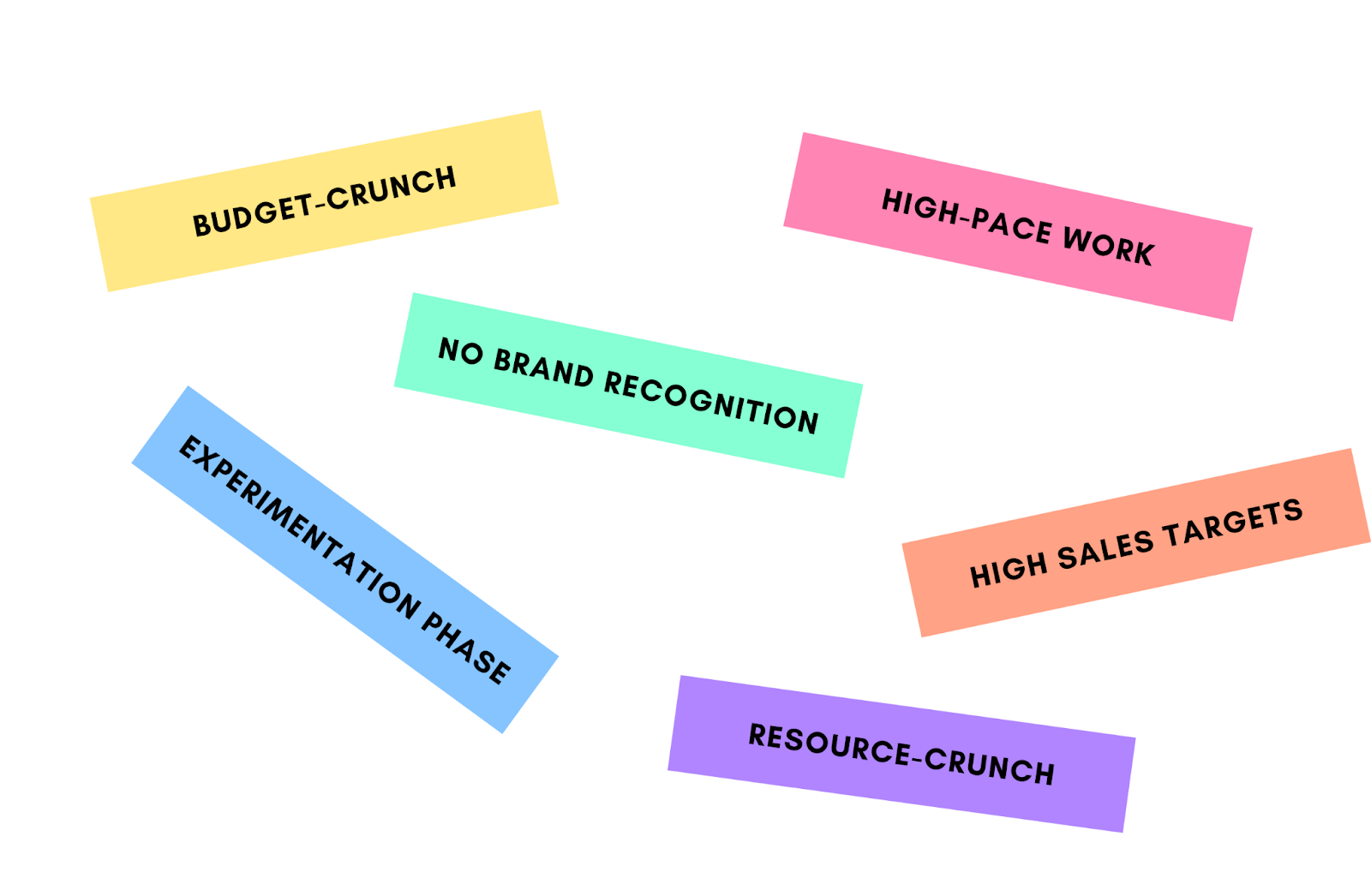
Considering the number of restrictions and possibilities one faces in a small organization sales steam, it’s evident that the sales strategies also need to be adjusted accordingly.
Today, all the 25 B2B sales process strategies you’ll encounter are designed to keep in mind the challenges and the need to invest less and get more return.
- Customer-first plan
- Use conversation intelligence
- Work on research and qualification
- Identify and work on decision-makers
- Focus on a small and specific market
- Outcome-oriented messaging
- Work on personal branding
- Be a challenger and relationship builder
- Cover cold calling best practices
- Create a concrete sales pitch
- Leverage email automation
- Employ free trials
- Offer customer service to prospects
- Prepare micro collaterals & demos
- Listen and ask questions
- Be a storytelling expert
- Chase and nurture qualified lead
- Heavily invest in social media
- Video selling techniques
- Learn follow-up best practices
- Be flexible
- Ask for referrals
- Create a sales playbook
- Invest in sales coaching
- Have a winning mindset
25 adjusted sales strategies for small businesses & startups
1. Customer-first plan
Normally, sales strategies revolve around the product and brand. Sales leaders build in-depth sales plans that address innovative techniques to reach the audience.
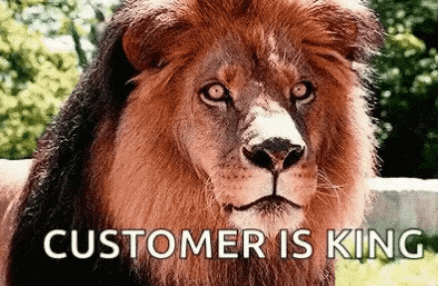
The problem a sales strategy should address is why a prospect would take an interest in your product and what value does the buyer see?
Based on this theory, all your sales collaterals, sales pitch, demo preparation, proposal, etc., are designed and aligned with customer pain points and needs. The sales conversations should always give precedence to the prospect’s needs and allow them to express their requirements.
2. Use conversation intelligence
Leveraging sales technology is a big part of the sales strategy. Your sales processes will be unproductive and slow without using the right automation tools.

After setting up the CRM system, the sales automation tool for sales meetings should be your priority( we’ll come to email automation too).
The reason we stress on conversation intelligence is that one it reduces a few meeting tasks(such as making notes) and secondly, it gives a better way to inspect and improve sales meeting performance.
Take advantage of the conversation intelligence platform and level up the sales meeting performance.
Would you like to explore a sales conversation intelligence solution?
3. Work on research and qualification
No sales strategy is complete without researching your audience and prospect’s organization. Unless the information is not right, it’s hard to land on the correct type of lead.

Qualifying the lead is an important step and needs focus. You may have to go in-depth and identify the qualifying parameters before going to a call. The next step is the discovery phase, where a seller gets on a call and questions the prospect. The sales rep can politely validate their research information by taking advantage of the opportunity.
Recommended reading: Is Your Sales Coaching Missing 30 Discovery Questions To Pinpoint Real Pain?
4. Identify and work on decision-makers
During the discovery call, strategize questions that support the seller in identifying the decision-maker from other members of the buying committee.

Qualification questions help sellers identify the prospect-side team and sort out the decision-maker. The interest and questions of the decision-maker will play a vital role in pushing the deal ahead.
5. Focus on a small and specific market
A common mistake small-sized organizations make at the initial stage is chasing a range of potential market segments–different sizes, industries, and needs–to pitch their product.

The sales strategy of segmenting the market must focus on niche and smaller segments. The selected group must be the most eligible candidate for the product or service. When focusing on smaller markets, you’ll find it easier to address their common needs and pain points.
Smaller niche also encourages content creation that’s specific and personalized. The chances of conversion are higher, and so is the start of a long-term relationship.
6. Outcome-oriented messaging
What do you think people buy?- Is the product or a benefit?

If you observe carefully, it’ll dawn on you that buyers are humans, and they too make decisions based on emotional parameters more than logic. As a best practice, align all your sales strategies in the direction of benefits and value rather than features and functionalities.
For instance while selling a conversation intelligence product(the one we discussed earlier), if you tell the buyer that it reduces ramp-up time by 60% vs. the solution is capable of handling sales onboarding–which one do you think will sell better?

7. Work on personal branding
Small businesses can’t expect to make a brand image immediately after the launch. A viral campaign is good thinking, but unless the startup has any social proof in the market, that viral campaign can only see the daylight for a few days.

Small companies, entrepreneurs, and start-ups must build personal branding sales strategies. Practically, selling a successful CEO/founder is easier than an organization because the CEO has been in the market for a while.
Take advantage of personal branding campaigns for sales teams and encourage them to turn into thought leaders of their products and services. As thought leaders, their opinion and suggestions should be flawless and comprehensive for the audience.
Today’s sellers can make use of LinkedIn for the same purpose.
8. Be a challenger and relationship builder
When you start a B2B organization, should your efforts be short-term? Is that right?

No, that’s the wrong assumption that most small businesses make.
Initially, the strategy should focus on long-term plans, and thus all your customer interactions must lead to more relationships than results.
While teaching, tailoring and controlling the meeting is a great sign of a challenger seller, but in the early days the challenger selling model must be carefully mixed with a relationship-building framework.
With strong relations, upselling and cross-selling opportunities improve, product improvement feedbacks are frequent & genuine, and the chances of receiving referrals increase.
Recommended reading: 10 Challenger Sales Best Practices to maintain a certain amount of constructive tension across the sale.
9. Cover cold calling best practices
Reaching leads in the initial days can be a task and may see unnecessary repulsion due to lesser-known brand names.

But, one sales strategy never fails to show results–cold calling. Since ancient times, the structure and nature of cold calling may have evolved, but the core idea of cold outreach remains the same.
Cold calling( or cold email outreach automation) is one of the most budget-friendly ways to approach your target audience and deliver the first sales pitch.
Even though your company may not see flying colors from cold calling, the audience-focused cold calling will support in building the brand name and gaining initial traction to the website.

10. Create a concrete sales pitch
A sales strategy that revolves around the sellers’ company, product and benefits is a half-cooked sales strategy that may or may not delight the customer.

However, a sales pitch that focuses on the customer’s pain point and industry is a good sales pitch.
The quality and messaging of the sales pitch will matter. Prospects are attracted to a sales rep whose messaging is compelling and persuasive. Largely, a rep needs to sell themselves, the company, and the product in the shortest time possible. Otherwise, the buyer may lose interest and never think about your company again.
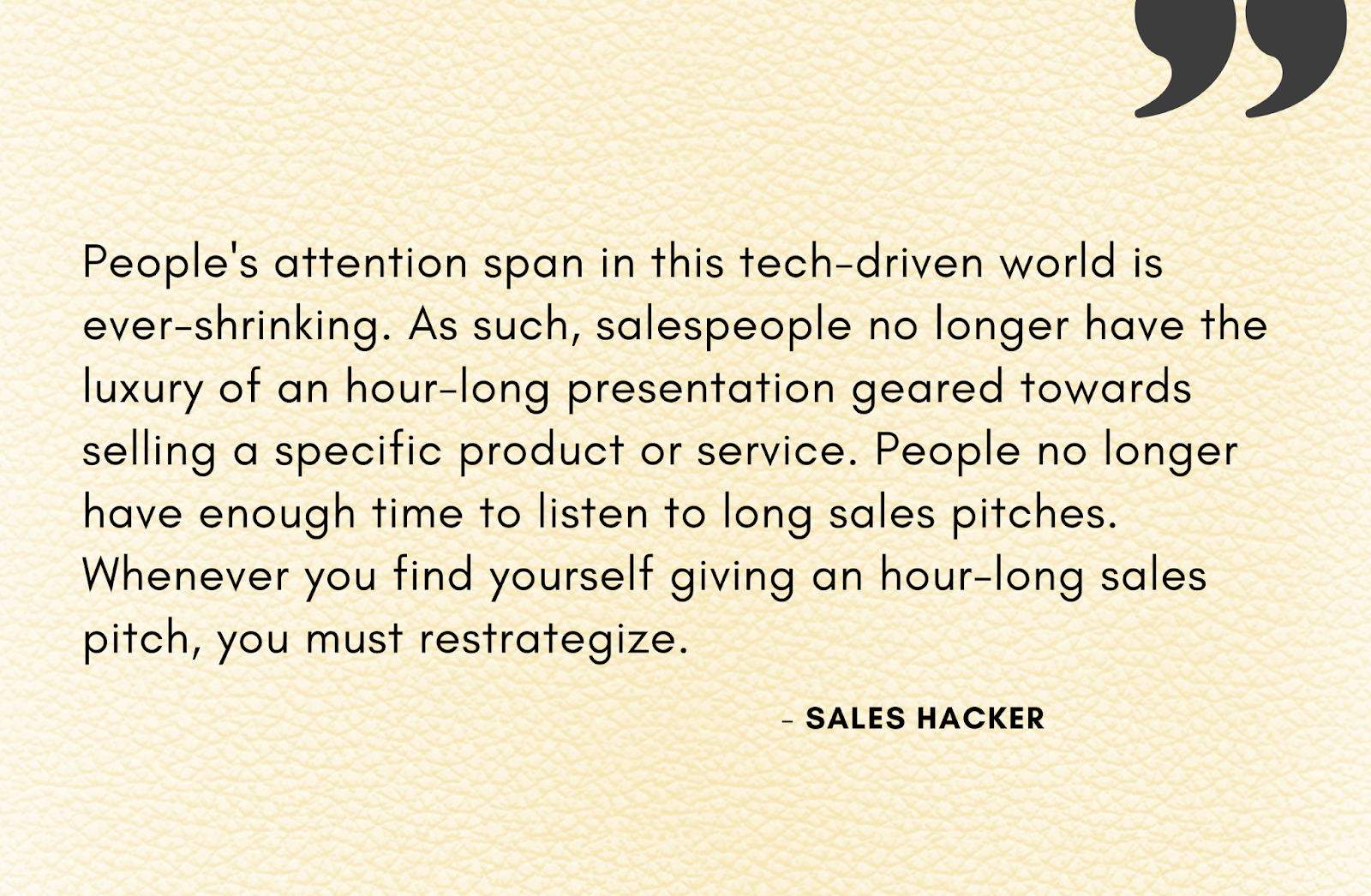
11. Leverage email automation
Speaking about sales automation in the earlier section, email automation is another critical sales technology that shouldn’t be ignored.

Emails play a vital role in the sales process. According to HubSpot, approximately 64% of small businesses have been relying on email marketing to reach prospects and existing customers.
However, smart startups aren’t writing every email on their own. A sales email automation software like brevo is making it all happen. One-time work needs to be done where the sellers can add a sequence and email format that should be sent no matter what.
Fetch the contact/account data from the CRM system to ensure compliance and personalization.
12. Employ free trials
At Convin, we have learned how our customers want to interact with us. And the first step is generally not a demo or a sales meeting.
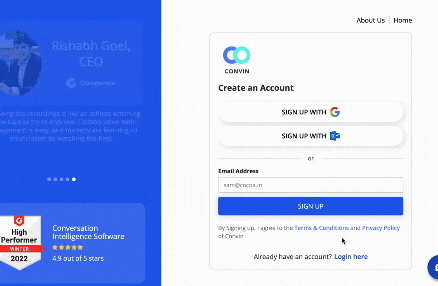
A free trial is what we encourage our customers to try before coming to the meeting. This sales strategy makes contact use our product, know us better, and causes stickiness after the end of the trial period.
You can never tell which trial prospect is ready to get on board, but at least this is a better way to get them started when the brand is still small and growing in the market. Moreover, the buyer trusts the vendor more because the vendor is transparent about the product.
13. Offer customer service to prospects
If you remember, we discussed customer service to prospective customers in length and understood how effortless the process is.

If you treat prospects like customers, you build credibility and trust for future deals even if sales don't close immediately.
According to Hubspot-
80% of consumers say a poor experience has made them stop doing business with a company.
If you are making efforts to stand out, then adding this sales strategy to your list of do’s is the need of the hour.
And here are 10 Effortless Customer Service FREE TRICKS for Prospects.
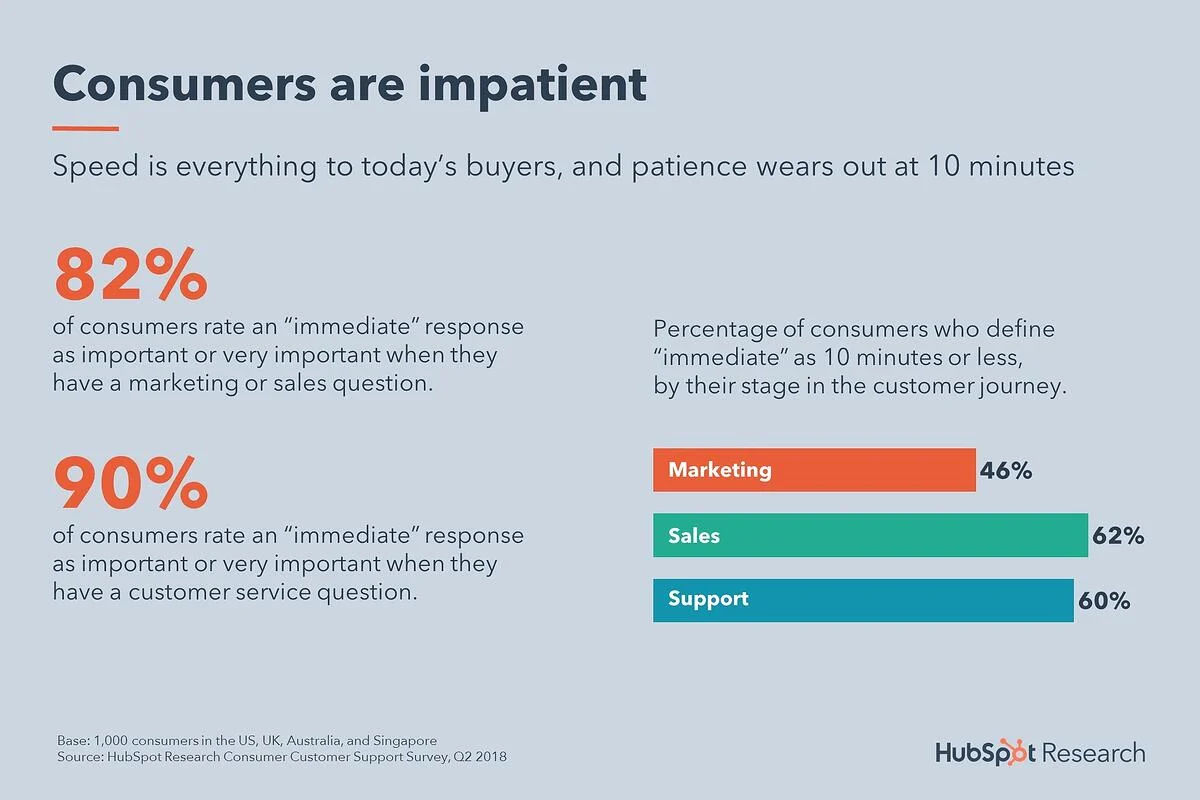
14. Prepare micro collaterals & demos
Instead of waiting until the demo stage, sellers can nurture the client by exposing them to micro collaterals and demo videos.

With the help of short sales material, sellers can arouse curiosity in the buyers. The interest will either make them ask for details or land a sales meeting.
Anyway, video consumption is on the rise, and companies are investing in pushing high-quality explainer and social media videos into the market.
For a startup, you can use all the free resources available handy and get started…eventually buy software and equipments to refine your videos.
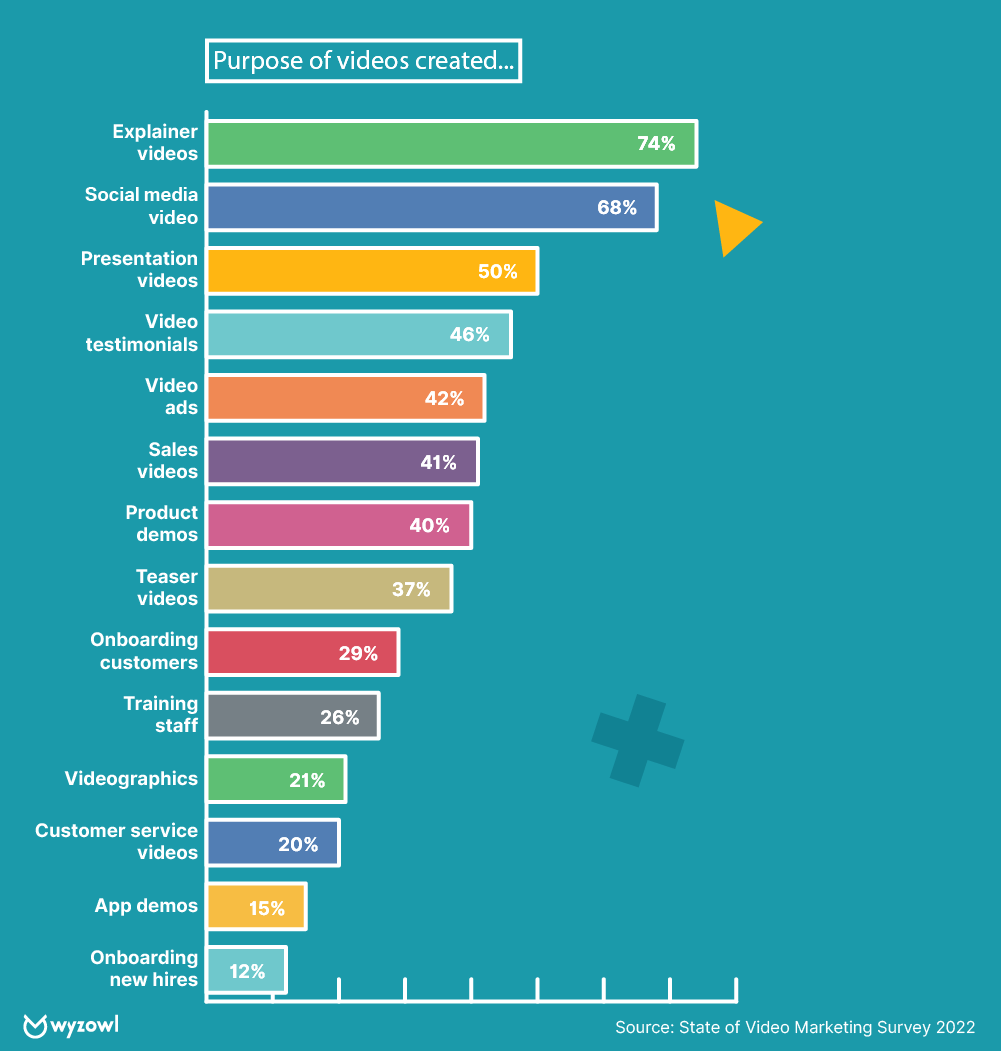
Source: Wyzowl
15. Listen and ask questions
Whoever asks the questions controls the sales conversation. Isn’t that a fact?

Salespeople must ask questions and ask the right questions. Preparing for good questions and allowing the buyer to open their heart out is a great practice.
The sales strategy also suggests that you don’t just ask questions. Ensure your questions start with a broader perspective and eventually become pointed. Pointed questions offer the right opportunity to pitch your solution.

16. Be a storytelling expert
Sales strategies and tactics are evolving. Sales leaders and reps are searching for more human ways to reach their audience and connect.

Whatever be your age, listening to a story transports you mentally to another place and time - and who wouldn't appreciate that right now?
Storytelling simplifies the consumption of information and leaves an impression—no matter who narrated the story, the brain captures the message perfectly.
Connecting with your audience is possible when the sales rep can use similar personas in a story and help the buyer visualize the result.
A simple narration can make a powerful sales pitch and touch your buyers' emotional chords.
Recommended reading: How to accelerate storytelling skills?
17. Chase and nurture qualified lead
In the earlier section, I touched upon qualification and discovery calls. But what’s the outcome and how do you take advantage of the assessment process?

Any good startup will not want to waste time chasing all their prospects. Investing time in qualified leads is a better option. It doesn't guarantee chances of winning but improves relationships and helps you learn from the process.
Remember, the cost of pursuing a poor lead can be harmful in the long term.
18. Heavily invest in social media
Did you know? In the USA, in 2021, 91.9 percent of marketers in organizations with more than 100 employees were expected to use social media .

With that data in front of you, you can assess the importance of social media in sales and marketing.
However, social media activities don’t give results until and unless thought about.
For example, aggressively sharing B2B blogs on Facebook communities makes less sense than sharing those blogs on Linkedin.
The catch is simple. Learn where you’re audience is most active and fire up the content hose on the same channel.
Also, make efforts on social media channels on rolling out meaningful anc creative content. Your content idea must satisfy one of the following:

Lastly, don’t overlook the content tone for each channel. Comprehend and adapt the content with the channel's voice. Make efforts to act like an old community member.
19. Video selling techniques
Remote selling snatched away several things. One is definitely in-person meetings–the seller and buyer's candid relation-building time no longer exists.

The next best alternative to in-person selling is video selling. It’s surprising that even C-level executives invest time in videos and learning about new organizations.
Convin conducted a short survey on our various communities to understand if video usage improved after the pandemic. The following results were received:
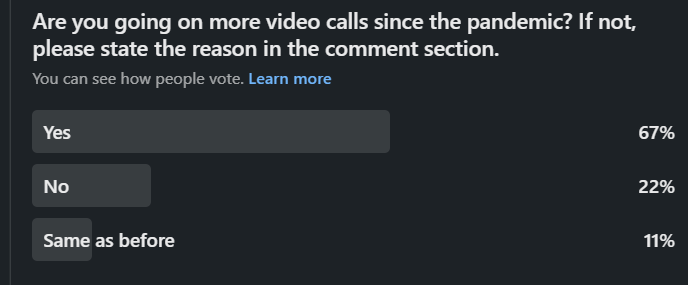
As a starting sales strategy, invest in simple video-based selling:
- Video call with customer
- Email message recorded in videos
- Conduct online events
- Sharing short explainer and best practices videos
- Participating in webinars with video on.
But trust me, this isn’t all you can do with videos.
Go check out the best video selling techniques at each sales cycle stage and compete with the performing organizations in 2022.
20. Learn follow-up best practices
Contacting a prospect and forgetting about them is one of the most disastrous things you can do as a seller.

Good sales strategies are incomplete without a follow-up plan. Without following up with the prospect, it’s hard to keep their attention alive and not let them get distracted.
Timely nurturing and solving objections at every step is a part of the follow-up strategy. For improved response, you can try sending emails after each meeting and highlighting all the key discussion points along with the next steps.
There’s a slight chance that your prospects forget to return the email or complete the next step action items–a gentle reminder is harmless and appreciated.
21. Be flexible
Many small companies claim that they have a fixed package and pricing structure. But what they forget to consider is that today’s customers don’t function this way.

When building sales strategies, sales leaders must communicate that the plans and activities will change as per customer and market requirements. This draws the line between flexibility and a fixed mindset.
Because customers are ready and prefer working with vendors who adapt to the customers’ requirements (genuine needs), you must be mentally and physically prepared for customization requests as a sales team. Any stringent sales strategy won’t work in 2022.
How about exploring 18 Tried and Tested Psychological Sales Strategies To Make You Sell More?
22. Ask for referrals
Small businesses must expand their reach with the help of existing customers.

Every seller realizes the importance of long-term relationships and building trust in the eyes of the customer.
Once the customer experience of the sales process and onboarding is wrapped smoothly, the next step is to show gratitude for choosing your company and ask for more referrals in the same industry or network.
23. Create a sales playbook
Generally, small businesses and startups are experimenting in the initial days and identifying what works for their sales teams.

After the experimentation shows results, you can’t move on to the next experiment. A significant chunk of B2B sales strategy development goes into documenting the cause and effect of all tactics and tips tried.
Once you start building the playbook, it’s easier to onboard new reps and ramp them up quickly. Secondly, the playbook will turn into reference material for the entire sales team.
24. Invest in sales coaching
Sales strategies can be applied and still not receive any business outcome. Some strategies may show a marginal surge in numbers, but the dip is evident after a point.

Small businesses and startups must invest in sales coaching right from the start. Once the new reps and seasoned reps are coached on the different selling techniques and continuously sharpen their skillset, the chances of receiving consistent business numbers increase.
Recommended reading: Why does sales coaching matter?
25. Have a winning mindset
No sales strategy can leave behind an attitude and the right mindset. All sales techniques and tips are useless without the right approach.

A positive thought process makes a lot of difference in your sales career considering how dynamic sales is–one day, you’re on cloud nine, and another day, it’s a sinking ship.
Having a winning mindset helps you on days when everything seems to go south. It helps you get back on your feet and plan another sales call.
Unless you want to fight back and win sales deals, no tool or sales strategy will help. It all starts from within.
So put your best foot forward and nail it today!
Need inspiration to get you started? Chime in with these sales influencers.
This blog is just the start.
Unlock the power of Convin’s AI with a live demo.









.avif)